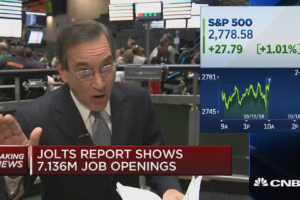Comprehensive Purchasing Managers Index 3 Methods.
Purchasing Managers Index Overview
Purchasing Managers Index (PMI) is a critical economic indicator that reflects the health of the manufacturing and service sectors of an economy. Compiled through monthly surveys of private sector companies, the PMI is used by policymakers, analysts, and investors to gauge economic activity, making it a valuable tool for economic forecasting and decision-making.
What is PMI?
The PMI is an index that measures the prevailing direction of economic trends in the manufacturing and service sectors. It is based on five major indicators: new orders, inventory levels, production, supplier deliveries, and the employment environment. The Purchasing Managers Index is reported as a number between 0 and 100, where:
- A PMI above 50 represents an expansion when compared with the previous month.
- A PMI under 50 represents a contraction.
- A reading at 50 indicates no change.

Components of PMI
New Orders:
This component measures the level of new orders from customers, serving as a primary indicator of demand.
Inventory Levels:
This measures the level of raw materials and finished goods that companies have on hand.
Production Output:
This reflects the amount of goods produced by companies.
Supplier Deliveries:
This measures the speed at which suppliers deliver goods and services. A slower delivery rate is typically seen as a sign of higher demand.
Employment Environment:
This reflects the employment levels within the surveyed companies.
Types of Purchasing Managers Index.
Manufacturing PMI:
This index focuses on the manufacturing sector, providing insights into the performance of factories and the production of goods.
Services PMI:
This index focuses on the services sector, which includes industries such as retail, healthcare, and finance.
Both indices are compiled through surveys of purchasing managers in their respective sectors, who are asked about changes in business conditions compared to the previous month.
How Purchasing Managers Index is Compiled
PMI data is collected through monthly surveys sent to purchasing managers at approximately 300 companies. These managers are asked about various business activities, including new orders, inventory levels, production, supplier deliveries, and employment. Responses are then weighted and aggregated to create the PMI.
Interpretation of Purchasing Managers Index
PMI is a leading indicator, meaning it can predict future economic activity. A high PMI reading is generally associated with economic growth, while a low PMI reading indicates economic contraction. Investors, policymakers, and business leaders use PMI data to make informed decisions.
Economic Growth:
A Purchasing Managers Index above 50 suggests that the economy is expanding. A rising PMI indicates increasing business activity, which often leads to job creation, higher consumer spending, and economic growth.
Economic Contraction:
A PMI below 50 suggests that the economy is contracting. A falling PMI indicates decreasing business activity, which can lead to job losses, reduced consumer spending, and economic decline.
Inflationary Pressure:
A high Purchasing Managers Index can also indicate rising prices, as increased demand can lead to higher costs for raw materials and wages.
Supply Chain Health:
The supplier deliveries component of the PMI can provide insights into supply chain conditions. Slower delivery times can indicate supply chain bottlenecks, which can affect production and pricing.
Global Perspective on Purchasing Managers Index
PMI is used globally to compare the economic performance of different countries. International organizations, such as the International Monetary Fund (IMF) and the World Bank, often analyze PMI data to assess global economic trends. Multinational corporations also use PMI to make decisions about where to invest and expand their operations.
Purchasing Managers Index and Financial Markets
Financial markets are highly sensitive to PMI data. A higher-than-expected PMI can lead to increased investor confidence, driving up stock prices and strengthening a country’s currency. Conversely, a lower-than-expected PMI can lead to investor caution, resulting in lower stock prices and a weaker currency.



